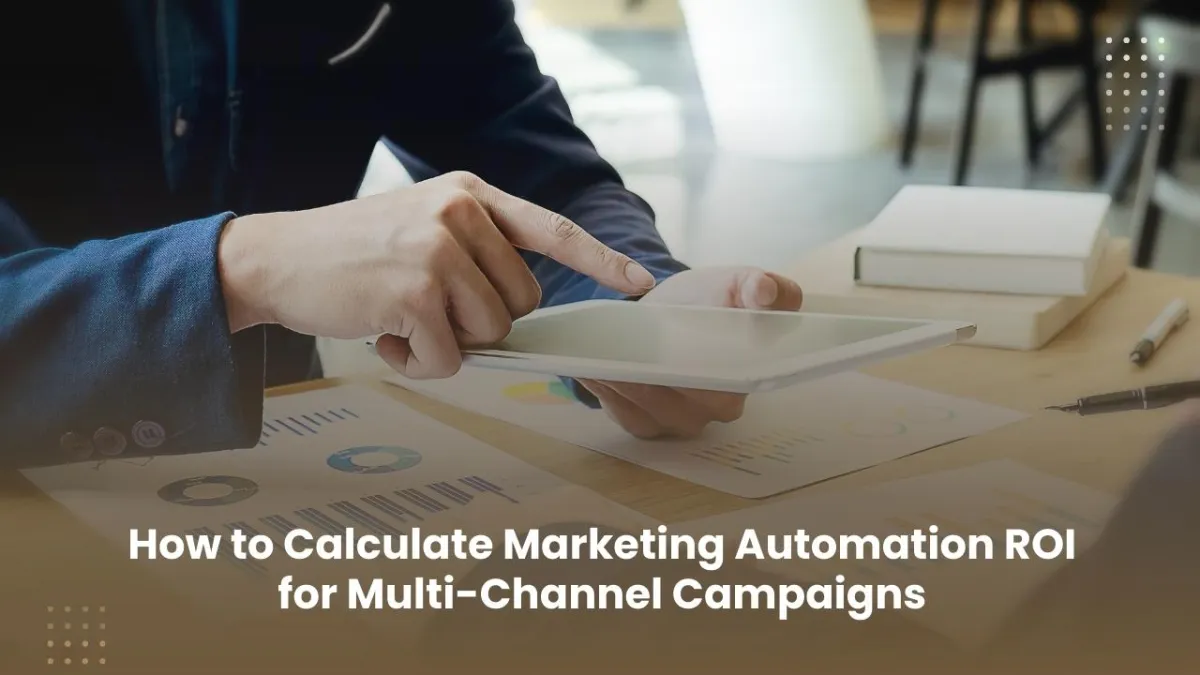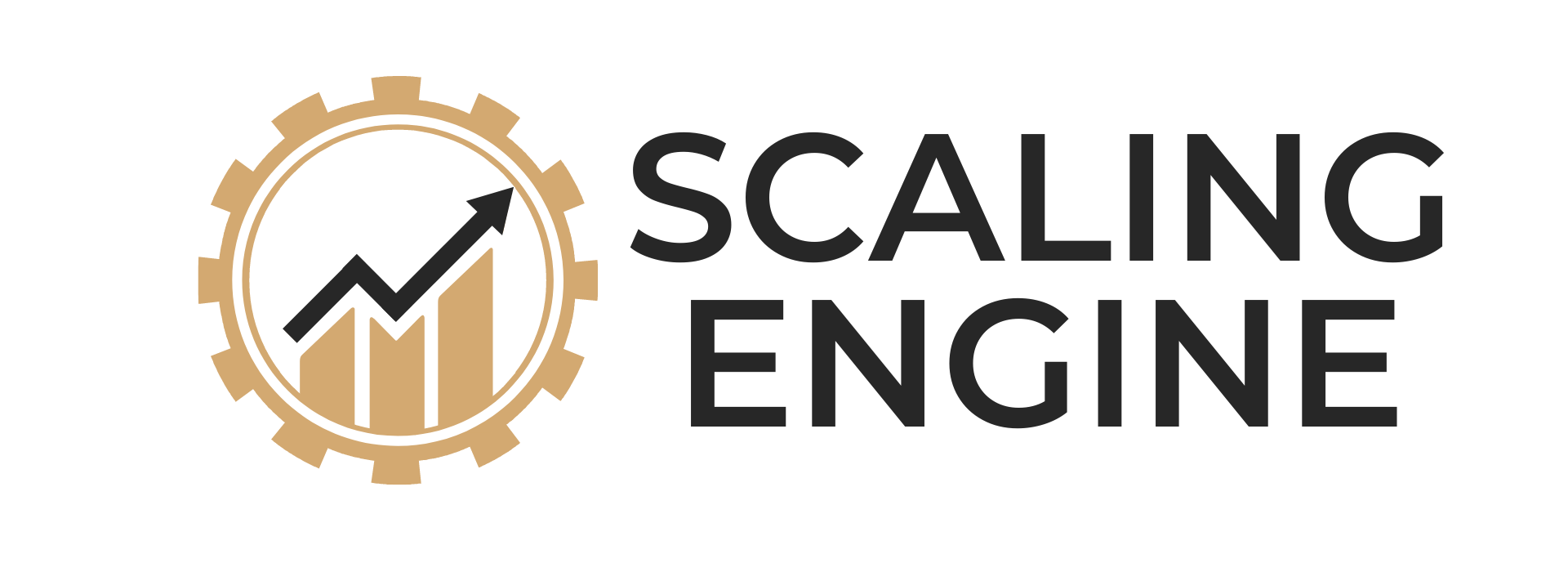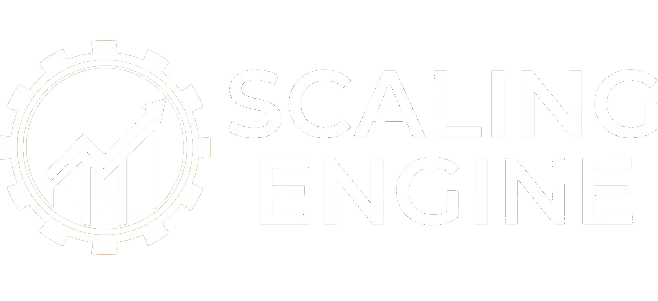
How to Calculate Marketing Automation ROI for Multi-Channel Campaigns
When it comes to scaling your business, marketing automation is one of the most powerful tools at your disposal. But how do you know if your marketing automation ROI is paying off? If you’re running multi-channel campaigns, calculating your return on investment (ROI) is essential to gauge the success of your strategies and ensure your efforts are driving growth.
In this article, we’ll break down how to calculate marketing automation ROI for multi-channel campaigns, provide marketing automation examples, and explore how inbound marketing automation fits into the picture.
Why Marketing Automation ROI Matters for Your Business
For SaaS companies or businesses scaling their operations, marketing automation is a game-changer. Automation helps streamline repetitive tasks, save time, and personalize communications. But here’s the question: How do you measure success?
ROI measurement allows you to make data-driven decisions. It tells you what’s working and what’s not—empowering you to refine your strategies. A proper ROI calculation also helps you decide where to invest more or where to pull back. After all, your marketing efforts should not only attract customers but also turn a profit.
The Basics of Marketing Automation ROI
To get started, let’s break down the essential formula for calculating marketing automation ROI.
For a more granular look at this formula, let’s go through the variables:
Revenue from Marketing Automation: This is the revenue generated through leads nurtured, closed, and retained using marketing automation systems.
Cost of Marketing Automation: This includes the cost of the tools, platforms, agency fees, and any labor involved in setting up or maintaining automation systems.
By calculating this, you get a tangible number that indicates your return. But that’s just the beginning. Now, let's explore multi-channel campaigns and how they affect your ROI.
Understanding Multi-Channel Campaigns in Marketing Automation
Multi-channel campaigns are at the core of modern inbound marketing automation strategies. Rather than focusing on just one platform—say email marketing or social media—multi-channel campaigns integrate several touchpoints where potential customers can interact with your brand.
For example, your marketing automation system could sync emails, social media posts, retargeting ads, and landing pages, all working together to nurture leads at different stages of the funnel. These diverse touchpoints create multiple opportunities for prospects to engage with your content, leading to better conversion rates.
How Multi-Channel Campaigns Impact Marketing Automation ROI
When you run multi-channel campaigns, you’re gathering data from different sources—email open rates, click-through rates, social media engagement, form submissions, etc. This wealth of data gives you an in-depth understanding of which channels are contributing the most to your success.
However, measuring ROI from multi-channel campaigns isn’t as simple as it sounds. Let’s dive into some of the challenges you may face when calculating marketing automation ROI.
Challenges in Measuring Multi-Channel Marketing Automation ROI
Data Fragmentation: With multiple channels, data can get fragmented. You’ll likely be pulling data from different systems, such as your CRM, email marketing tools, social media analytics, and more. Integrating this data can be a significant challenge, and failing to do so can lead to inaccurate ROI measurements.
Attribution: Determining which channel influenced the customer’s decision to purchase is another challenge. Was it an email campaign that drove them to your site, or was it a paid ad on LinkedIn? With multi-channel campaigns, it’s crucial to implement a multi-touch attribution model.
How to Calculate ROI for Multi-Channel Campaigns
The following steps will guide you through the process of calculating ROI for multi-channel marketing automation:
Step 1: Define Your Goals
Before diving into the numbers, clearly define what you want to measure. Some common KPIs for multi-channel marketing automation include:
Lead generation (number of new leads)
Sales revenue (closed deals from nurtured leads)
Customer lifetime value (CLTV)
Step 2: Set Up Conversion Tracking Across Channels
To accurately calculate ROI, you need to track conversions at every touchpoint. Set up tracking for:
Emails: Open rates, click-through rates, and conversions
Social Media: Engagement, website visits, and conversions from posts or ads
Paid Ads: Cost per click, cost per acquisition, and return on ad spend
Step 3: Calculate the Revenue Generated
Next, measure how much revenue has been directly attributed to each marketing channel. This might require connecting your marketing automation platform with your CRM and sales tools. The goal is to track leads from first touch to sale.
Step 4: Calculate the Total Cost
Add up all the costs associated with your marketing automation. This includes:
Subscription fees for your marketing automation software
Costs for the marketing automation agencies you’re working with
Internal resources spent on campaign creation, execution, and analysis
Step 5: Apply the ROI Formula
Now, use the ROI formula mentioned earlier to calculate your ROI. By comparing the total revenue against the costs, you can determine if the campaign was profitable.
Marketing Automation Examples That Can Help You Measure ROI
Let’s go over a few marketing automation examples to see how these strategies affect your ROI:
Example 1: Email Drip Campaigns
By automating email drip campaigns that nurture leads over time, you can track how well your email marketing performs across several stages of the funnel. Open rates and click-through rates will help you determine if the campaign is driving enough leads. By measuring conversion rates for those leads into customers, you can calculate how well this channel is performing within the context of your multi-channel campaign.
Example 2: Social Media Integration
Many businesses now leverage social media channels as part of their marketing automation efforts. Tools like Hootsuite and Buffer allow for automated posting across multiple platforms. Tracking engagement rates (likes, comments, shares) and lead generation through social media ads or posts can help you identify how effective these touchpoints are in driving revenue.
Marketing Automation Agencies: How They Help You Maximize ROI
For businesses that need help implementing and optimizing inbound marketing automation, partnering with marketing automation agencies can be a smart move. These agencies specialize in setting up, managing, and optimizing multi-channel campaigns to drive ROI.
Working with experts allows you to:
Set up advanced workflows and automations
Optimize landing pages and email sequences for maximum conversions
Analyze data and adjust campaigns for better performance
Agencies can help businesses scale quickly and effectively, bringing technical expertise to the table.
Advanced Techniques for Optimizing Marketing Automation ROI
Achieving a strong marketing automation ROI requires more than just tracking basic metrics. To scale your efforts efficiently and optimize results across multi-channel campaigns, businesses must employ advanced techniques that refine and enhance their strategies. This section covers crucial tactics and automation strategies that drive higher ROI.
1. Utilize Advanced Attribution Models
Attribution is a common challenge for multi-channel marketing automation. Many businesses still rely on simple attribution models like last-click, which gives full credit to the final touchpoint before conversion. However, in multi-channel campaigns, this approach can overlook the true impact of earlier touchpoints.
To get a more accurate view, consider adopting a multi-touch attribution model that distributes credit across various touchpoints. This will help you evaluate the effectiveness of each channel and its contribution to the final conversion.
Consider these advanced models:
Linear Attribution: Equal credit is given to each touchpoint across the customer journey.
Time Decay Attribution: Later touchpoints, closer to the conversion, receive higher credit.
Position-Based Attribution: Emphasizes the first and last touchpoints in the journey.
These models provide deeper insights into your multi-channel marketing automation, enabling you to understand which channels are most effective at each stage of the funnel.
2. Segmentation for More Targeted Campaigns
A one-size-fits-all marketing approach is no longer effective. For businesses looking to scale their marketing automation ROI, audience segmentation is a game changer. Segmenting your audience based on behavioral data allows you to create highly tailored, targeted campaigns that resonate more with your leads.
Effective segmentation might include:
Lead Source: Understanding where your leads came from (e.g., social media, organic search, paid ads).
Customer Lifecycle: Tailoring messages to leads at different stages—whether they’re in the awareness, consideration, or decision stage.
Engagement Level: Adjusting your approach based on how actively a lead interacts with your content.
By automating workflows specific to each segment, you can increase engagement and improve your ROI from marketing automation examples.
3. A/B Testing and Experimentation
To optimize your ROI, continuous A/B testing is a necessity. Marketing automation gives you the power to test various elements within your campaigns to identify which versions drive the highest conversions.
You can experiment with:
Email Subject Lines: Identify which phrasing generates higher open rates.
CTA Buttons: Test different button text or design to see what encourages clicks.
Landing Pages: Evaluate which layout and content keep visitors engaged.
These tests provide valuable data, helping you fine-tune your marketing automation strategy for better results.
4. Optimize Customer Retention with Automated Workflows
Customer retention is just as important as customer acquisition. Your multi-channel campaigns should not only focus on generating leads but also nurturing and retaining existing customers. Implementing automated workflows for retention ensures that your marketing efforts yield lasting results.
For example, use automation to:
Send re-engagement emails to inactive customers.
Offer exclusive promotions or content to loyal clients.
Trigger personalized product recommendations based on past purchases.
These actions will increase customer lifetime value and reduce churn, ultimately boosting your marketing automation ROI.
Inbound Marketing Automation for Higher ROI
Inbound marketing automation plays a pivotal role in scaling your marketing efforts and driving higher ROI. By automating lead nurturing and aligning your content with customer needs, you can guide prospects seamlessly through the buyer’s journey. Here's how you can use inbound marketing to maximize ROI:
1. Lead Scoring and Qualification
Marketing automation platforms allow you to set up lead scoring systems that rank your leads based on engagement levels. By automatically assigning scores to leads based on actions such as opening emails, visiting specific landing pages, or downloading resources, you ensure your sales team prioritizes the best opportunities.
This not only saves time but also improves conversion rates because your sales team is focusing their efforts on the most qualified leads.
2. Personalized Content Delivery
Delivering personalized content through automation helps nurture leads and increase conversion rates. Using behavioral data, such as a lead’s past interactions with your website, you can tailor content specifically to their interests.
For instance, a lead who downloaded a whitepaper on email marketing might receive an automated follow-up email with related resources or a special offer for your email marketing services. This personalized approach is much more effective than generic messaging and significantly improves engagement.
How Marketing Automation Agencies Can Help Scale Your ROI
If your internal team lacks the expertise or time to fully leverage marketing automation, partnering with a marketing automation agency can be a game changer. These agencies bring in-depth knowledge and experience, offering tailored strategies and technical solutions that drive results.
By collaborating with an expert agency, you can:
Develop a customized automation strategy suited to your business goals.
Integrate the right tools, CRMs, and platforms that work together seamlessly.
Continuously optimize campaigns through A/B testing, tracking, and performance analysis.
Working with a skilled marketing automation agency ensures that every aspect of your marketing automation is handled efficiently and that your ROI continues to grow over time.
Conclusion: Advanced Strategies for Maximizing Marketing Automation ROI
To truly maximize your marketing automation ROI, adopting advanced strategies such as multi-touch attribution, segmentation, A/B testing, and personalized inbound marketing is key. By continuously optimizing these tactics, businesses can see substantial improvements in their multi-channel campaign performance.
If you haven’t already, start incorporating these strategies into your automation efforts to improve conversion rates, drive higher engagement, and ensure that your marketing investment continues to yield strong returns. Whether through advanced attribution, lead scoring, or working with marketing automation agencies, scaling your business with automated systems can provide significant long-term growth.


